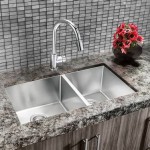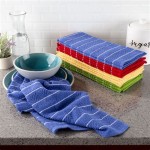How To Sharpen A Kitchen Knife With Stone: A Comprehensive Guide
Maintaining a sharp kitchen knife is paramount for efficient and safe food preparation. A dull knife requires more force, increasing the risk of slippage and potential injury. While various sharpening methods exist, using a whetstone, also known as a sharpening stone, offers a superior edge and allows for greater control over the sharpening process. This article provides a detailed guide on how to sharpen a kitchen knife with a stone, covering the essential steps and techniques necessary to achieve a razor-sharp blade.
Before embarking on the sharpening process, it's crucial to understand the components involved. A whetstone consists of abrasive particles bonded together, available in varying grits. The grit number indicates the size of the abrasive particles; a lower number signifies a coarser stone for removing material quickly, while a higher number denotes a finer stone for polishing the edge. A typical sharpening progression involves using a series of stones, starting with a coarse stone to establish the bevel and progressing to finer stones to refine the edge. Most commonly, a coarse stone in the range of 400-600 grit is used for initial sharpening, a medium stone in the range of 1000-2000 grit for refining the edge, and a fine stone in the range of 3000-8000 grit for polishing.
In addition to the whetstone, honing oil or water is essential. These liquids serve as lubricants, preventing the stone from clogging with metal filings and facilitating smoother sharpening. The choice between oil and water depends on the type of stone; some stones are designed for oil use, while others are intended for water. Always follow the manufacturer's guidelines regarding the appropriate lubricant for the specific stone being used. Furthermore, a stable and non-slip surface is necessary to hold the whetstone securely during sharpening. A dedicated whetstone holder or a damp towel placed underneath the stone can provide the required stability.
Key Preparations Before Sharpening
Prior to commencing the sharpening process, several preparatory steps are essential for safety and optimal results. First, thoroughly clean the knife blade to remove any food residue or debris. A clean blade ensures consistent contact with the stone and prevents contamination. Second, properly lubricate the whetstone according to the manufacturer's instructions. For oil stones, apply a generous amount of honing oil to the surface and allow it to soak in for several minutes. For water stones, submerge the stone in water for approximately 10-15 minutes until the stone is fully saturated, or continuously wet it throughout the sharpening process. Third, secure the whetstone on a stable and non-slip surface. This prevents the stone from moving during sharpening, which can lead to inconsistent sharpening and potential injury.
A crucial aspect of sharpening is maintaining the correct angle between the knife blade and the whetstone. This angle, known as the bevel angle, is typically between 15 and 20 degrees for most kitchen knives. Identifying the existing bevel angle is paramount. This can be done by visually inspecting the knife edge or by using a bevel angle guide. Consistent maintenance of this angle during sharpening is crucial for achieving a sharp and durable edge. Varying the angle can result in a rounded or uneven edge, diminishing the knife's performance.
During the sharpening process, consistent pressure is also of utmost importance. Excessive pressure can damage the stone or the knife blade, while insufficient pressure may not effectively remove material. A moderate and consistent pressure, approximately equal to the weight of the knife, is generally recommended. Focus on maintaining a steady hand and applying even pressure throughout each stroke. Practice and patience are key to developing the necessary feel and control.
The Sharpening Process: Step-by-Step
The sharpening process involves a series of controlled strokes across the whetstone, gradually removing material from the blade to create a new, sharp edge. Begin with the coarse stone, ensuring it is properly lubricated. Place the heel (rear) of the knife blade on the stone at the established bevel angle. Using a smooth, sweeping motion, draw the knife across the stone towards the tip, maintaining the angle and applying consistent pressure. Ensure the entire length of the blade makes contact with the stone during each stroke. Lift the knife at the end of each stroke and repeat the motion in the same direction. This is known as "drawing" the knife. Repeat this process approximately 10-15 times on one side of the blade.
After sharpening one side of the blade, flip the knife and repeat the process on the other side. Maintaining the same bevel angle and pressure, draw the knife across the stone in the opposite direction. Ensure an equal number of strokes are applied to each side of the blade to maintain symmetry. Periodically check the progress of the sharpening by visually inspecting the edge. A burr, a fine metal wire that forms on the edge of the blade during sharpening, should be visible and consistent along the entire length of the blade. This burr indicates that material has been removed from both sides of the blade and a new edge is being formed.
Once a consistent burr has formed, switch to a medium-grit stone. Repeat the sharpening process, using the same technique as with the coarse stone, but with slightly less pressure. The purpose of the medium-grit stone is to refine the edge and remove the scratches left by the coarse stone. Again, ensure an equal number of strokes are applied to each side of the blade. After sharpening with the medium-grit stone, the burr should be noticeably smaller and more refined.
Finally, switch to a fine-grit stone for polishing the edge. Using the same technique as before, further refine the edge and remove any remaining scratches. Apply very light pressure during this stage, focusing on creating a smooth and polished edge. The burr will become very small and may even disappear during this process. After sharpening with the fine-grit stone, the knife should possess a razor-sharp edge.
Deburring and Edge Alignment
Once the sharpening process is complete, it's crucial to remove the burr and align the edge. Several methods can be used for this purpose. One common method is to use a leather strop. A strop is a piece of leather, typically mounted on a paddle or board, that is used to polish and align the edge of the knife. Draw the knife across the strop in the opposite direction from sharpening, using light pressure. Repeat this process several times on each side of the blade.
Another method for deburring is to use a very fine-grit stone, such as an 8000-grit stone. Lightly draw the knife across the stone at a very shallow angle, almost flat against the stone. This will remove the remaining burr without significantly altering the edge. Alternatively, a few very light passes on a honing rod, held almost parallel to the blade, can also remove the burr and align the edge.
After deburring, test the sharpness of the knife by carefully slicing through a piece of paper or tomato. A sharp knife should effortlessly slice through these materials without tearing or requiring excessive pressure. If the knife does not pass the sharpness test, repeat the sharpening process with the fine-grit stone and deburring until the desired sharpness is achieved.
Regular maintenance is crucial for preserving the sharpness of a kitchen knife. Honing the knife on a honing rod before each use helps to realign the edge and maintain its sharpness. A honing rod does not sharpen the knife, but rather straightens the edge, preventing it from becoming dull. Sharpening with a stone should be performed periodically, as needed, depending on the frequency of use and the type of materials being cut. Storage is also important; store knives in a knife block or on a magnetic strip to protect the blade from damage. Avoid storing knives loose in a drawer, as this can dull the edge and increase the risk of injury. With proper sharpening and maintenance, a kitchen knife can provide years of reliable service.
:max_bytes(150000):strip_icc()/__opt__aboutcom__coeus__resources__content_migration__serious_eats__seriouseats.com__images__20100423-sharpening20-2004-aba6e6fa129844a7a106fa006eb98c3d.jpg?strip=all)
How To Sharpen A Knife With Whetstone

How To Use A Sharpening Stone Knives

How To Sharpen A Knife With Stone Kitchen Knives Sharpening

How To Use A Sharpening Stone In 6 Easy Steps W

The Beginner S Guide To Whetstone Sharpening Ethan

How To Use A Whetstone Sharpen Knives Pro Tool Reviews

How To Use A Sharpening Stone In 6 Easy Steps W
:max_bytes(150000):strip_icc()/__opt__aboutcom__coeus__resources__content_migration__serious_eats__seriouseats.com__images__20100423-sharpening20-2006-d448b29f1dfe45f6b0f50dc3dd6b58d2.jpg?strip=all)
How To Sharpen A Knife With Whetstone

How To Sharpen Knives A Cook S Guide Keeping Your Sharp Good Food

Super Simple Whetstone Knife Sharpening Techniques
Related Posts








